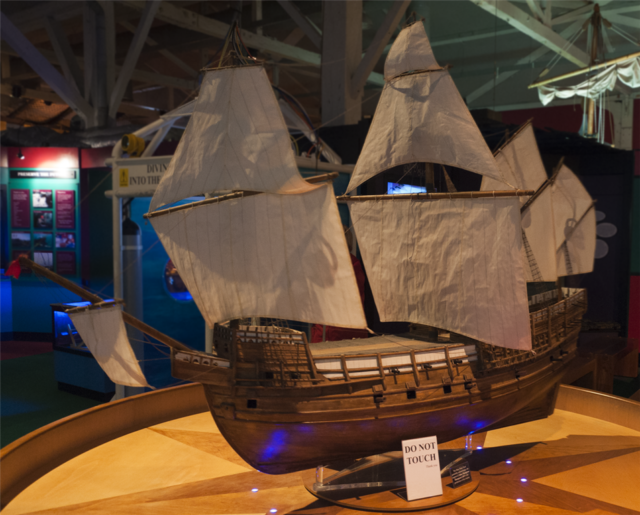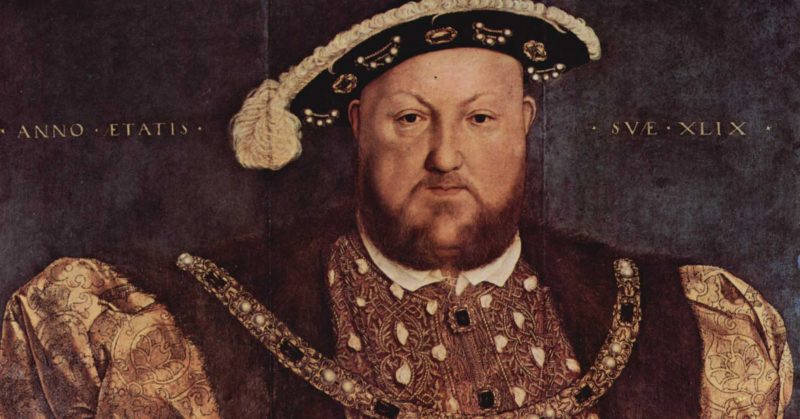When Henry VIII became King of England in 1509, he inherited a nation that was not strong in war. England’s recent wars had mostly been internal, in the form of the Wars of the Roses. Emerging as the victor from these wars, his father, Henry VII, had been concerned with consolidating his new Tudor dynasty, not flexing its military might. As a result of these factors, the English had not been placed under pressure to keep up with military advances on the continent. Their reputation when Henry VIII took the throne was that of brave soldiers in a backwards army.
Henry VIII was a proud, passionate and military-minded ruler. Determined to see England become a major player on the European stage, he brought about the military reforms needed to create a modern fighting force.
1. Reviving Military Nobility
Henry VII had ensured that his nobles still took some interest in the arts of war, encouraging a cult of chivalry and hosting tournaments in which his son was a leading light. But it was the younger Henry who, filled with the fighting spirit these tournaments had fostered, sought to revive a real interest in war.
For a Renaissance kingdom, the nobility were still the natural leaders of any army – men with the time and resources to become experts in combat and strategy, the nation’s born leaders. Henry VIII encouraged his nobles to aspire to military leadership, favouring men who sought glory in war or did well in tournaments, such as the Duke of Suffolk. Knowing that political advancement was now tied to martial prowess, nobles turned themselves with growing enthusiasm to the skills of the battlefield.
2. The Gentlemen Pensioners
Connected to this were the Gentlemen Pensioners, a group of royal mounted guards created by Henry. Added to the Yeomen of the Guard, brought in by his father, and the 200-strong palace guard created by their predecessors, these were the only standing troops in England.
Their closeness to the king made service in the Gentlemen Pensioners appealing to young aristocrats with aspirations to greatness. They, therefore, helped to build up the prestige of military service at court. On top of this, they provided a group of officers who could command troops whenever a larger army was raised to fight a war.
3. Foreign Mercenaries
To make up for the lack of experience in his country, Henry VIII made extensive use of foreign mercenaries to fill specialist roles. A quarter of the troops he fielded in an army of 1544 were foreigners.
The mercenaries had a range of skills. Some were hand gunners, using the increasingly popular gunpowder infantry weapons. Some were Landsknechts, famed German pikemen. There were heavy cavalry, mounted gunners with pistols and arquebuses, and even stradioti, light skirmishers from the Balkans.
These soldiers created a professional core to the army and acted as an example to less experienced English troops.
4. More Handguns
One of the main reasons for recruiting mercenaries was the growing importance of gunpowder weapons. England had clung to the power of the longbow, but as that became increasingly obsolete, new technology had to be adopted.
Guns were imported and a native manufacturing industry encouraged. Mercenaries served not only to carry these weapons but also to train English soldiers in their use.
Of the 44,000 men Henry fielded in 1544, only 10% were equipped with gunpowder weapons. With every campaign that passed, the number grew.
5. Artillery
Embracing technology also meant investing in artillery, something Henry did with enthusiasm. He imported over a hundred cannons from the continent, including the famous great bronze gun called the “twelve apostles”, manufactured at the Malines foundries near Antwerp.
Such guns were vital to 16th-century warfare. They could be deployed on the battlefield, but more importantly were used to bombard enemy fortifications, cracking open castles and town walls.
To ensure the long-term health of the English artillery train, Henry encouraged the creation of a home-grown cannon-founding industry. Craftsmen came from abroad to produce English cannons, and Englishmen, in turn, learned the skills from them. By the end of Henry’s reign, both bronze and cast-iron cannons were being produced in England.
6. The Fleet

As an island nation, England was reliant upon its navy both for defence and to project its power abroad. Henry sought to bolster the navy through a program of shipbuilding, enlarging the English fleet.
While this was successful in general, it led to one of the most famous and tragic accidents in English naval history. In 1545, the Mary Rose, Henry’s much-celebrated flagship, keeled over and sank on its way out to sea. There were many trapped men on board, and they drowned. That the disaster happened in front of the king and his assembled army added to the humiliation.
Tragic as it was, the accident has proven a happy one for archaeologists, as the 20th-century retrieval of the Mary Rose allowed great insights to be gained into Tudor warfare.
7. Coastal Forts
The navy was not the only contribution Henry made to England’s naval defence. Using money taken from the abolished monasteries, and even some of the materials with which they had been built, he created a string of fortresses all along England’s southern shores, reaching halfway up the country on each coast. Though they did not use all the latest techniques such as angled bastions, these fortifications incorporated many recent developments such as rounded bastions and tiers of guns in concentric circles.
8. Military Careers
A side-effect of all these developments was that it became much easier to have a military career in England. With an expanded fleet, more standing forces, more regular armies, and more forts to be garrisoned, it became possible to build a career out of military service in a way that could not be done before. More opportunities for service meant that more men developed military skills, making it easier to assemble competent armies. A virtuous cycle of military improvement had begun.
Source:
- David Chandler and Ian Beckett (eds) (1994), The Oxford History of the British Army.
